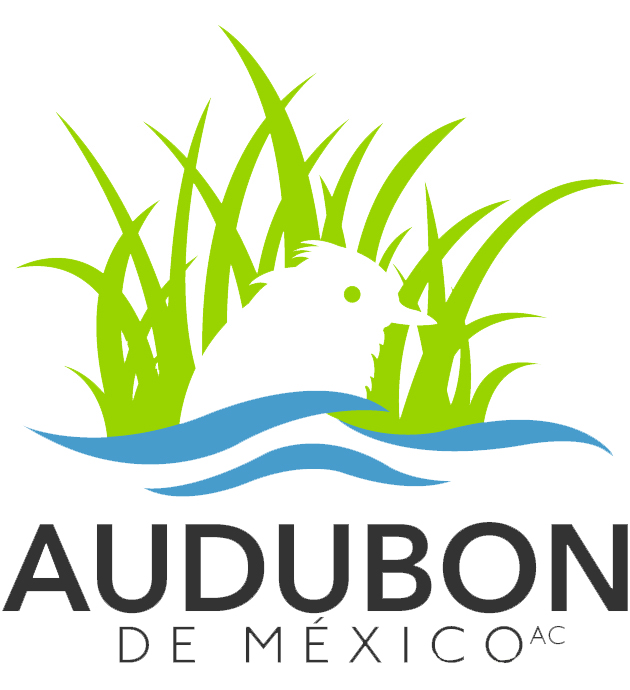Nesting Season
a time of new beginnings
Nesting season begins in February and depending upon the specie may last through mid-summer, although there are a few exceptions, like the barn swallows who return to San Miguel in late spring and nest all through the summer.
This is a very special time of year, the beginning of a new generation of birds living amongst us. Those who regularly watch birds will likely notice behavorial changes, which provide clues to where a nest is being made or located. We can then watch and listen for nestlings and fledglings, always keeping a safe distance in order to not disturb. If you know where to look (information below), it helps you to become more observant on walks or while in your garden.
Trimming trees or shrubs should be avoided during this season, unless you have methodically searched for nests.
If you are interested in serious nest watching, and would like to contribute nest monitoring information to science, visit the Cornell Lab of Ornithology Nest Watch website.
An Introduction to Bird Nests
Nest building:
Most birds make their nests in trees or shrubs, but some species make nests on the ground (like the Long-billed Dowitcher and American White Pelican) or use a hole or crevice in rocky cliff (such as the Canyon Wren), while other birds (like the Bronzed and Brown-headed Cowbird) lay theirs eggs in the nests of other birds, letting unsuspecting “foster parents” do all the work of rearing the young.
In most species, the female does most or all of the nest construction, though the male often helps, however there are species where the male does most or all of the nest building, such as members of the egret family. Juveniles may also act as helpers for the adults.
The skill to build a nest is instinctive; some birds raised in captivity can build nests typical of their species without ever having seen one. However, researchers found that young birds do improve their nest building skills with practice; changing their technique from one nest to the nest and becoming more proficient in handling materials.
Nest design:
For a long time it was thought that nest design was primarily a function of security, but recent research reveals that nests are multifunctional – influencing partner selection, minimizing parasites, and creating microclimates in reaction to environmental conditions.
Each layer of a nest serves a specific purpose. Generally, coarse twigs often form the base while finer twigs and weeds are laced with bark to create the cup. Dry leaves, fine grasses, and other soft materials form the inner lining. Most birds build a new nest each year, though some refurbish their old nests and some occupy former nests of a different species.
There is often considerable variation in a nest of a particular species, depending on the individual, circumstances, location and available materials.
Nest designs common to the birds of SMA
Cup: The cup is the most common type of nest – smoothly round inside, with a deep depression to hold the eggs. Most are made of flexible materials, though a small number are made of mud or saliva. The Vermilion Flycatcher, hummingbirds, and Barn Swallows are just a few local examples of birds that make cup nests.
Scrape: The simplest nest construction is the scrape, which is a shallow depression in soil or vegetation and typically has a rim deep enough to keep the eggs from rolling away. Sometimes the scrape is lined with vegetation, small stones, shell fragments and feathers. Spotted Sandpipers and American White Pelicans build a scrape nest.
Pendant: Woven pouches that hang from the limbs of trees, using the fibers of nearby plants to create the structure. Often lined with hair, softer plant fibers, wool and mosses. Orioles build pendant shaped nests.
Saucer or plate: The saucer or plate nest, though similar to a cup nest, has only a shallow depression to house the eggs. American Coot and Least and Pied-billed Grebes build saucer shaped nests.
Platform: The platform nest is a large structure, often many times the size of the (typically large) bird which has built it. Depending on the species, these nests can be on the ground or elevated. Great, Snowy and Cattle Egrets, Blue, Green and Black-Crowned Night Herons, Osprey and Crested Caracara are a few examples of local platform nest builders.
Cavity: The cavity nest is a hole typically located in living or dead wood, but sometimes in the trunks of tree ferns or large cacti, including organos. Woodpeckers and Kestrels are examples of local cavity nesters.
What to look for and where to look
A sampling of local bird nest and nesting information, plus tips on where to look!
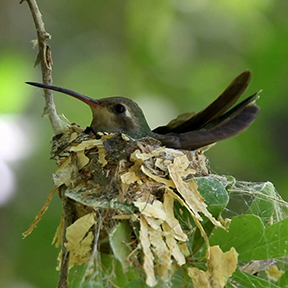
Broad-billed Hummingbird
Nest is a relatively loose cup of grasses, plant fibers, spider webs, lined with plant down. The outside is camouflaged with bits of leaves or bark; unlike many hummingbird nests, outside usually not decorated with lichens. 1-2 white eggs, incubated for about 10 days, ready to fledge in 7-10 days.
Where to look: Nest site is in deciduous shrub or low tree, saddled on horizontal or drooping branch or placed in fork, usually 3-9 feet above the ground.
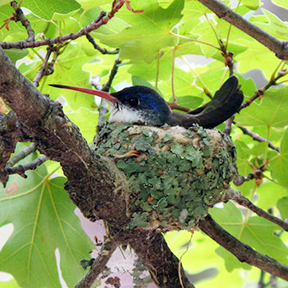
Violet-crowned Hummingbird
Nest is a compact cup of grasses, plant fibers, spider webs, lined with plant down. The outside is camouflaged with bits of lichen or twigs. 1- 2 white eggs, incubated for about 14 days, ready to fledge in 15-18 days.
Where to look: Deciduous tree or large shrub; placed on horizontal limb or in forked twig, although they have been found in vining plants, large leaves and beams of patio structures.
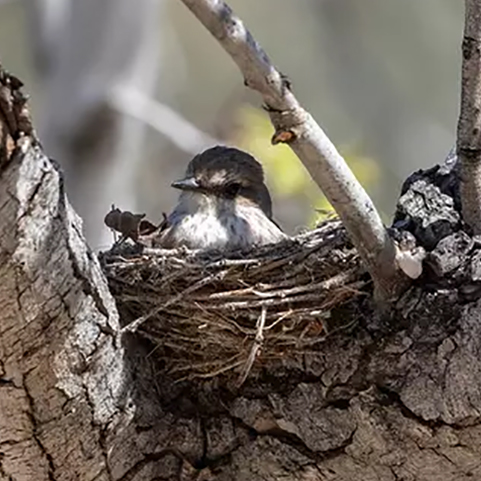
Vermilion Flycatcher
A loose cup of twigs, grasses, and fibers, lined with down, feathers and hair. Usually placed in a fork in a horizontal tree branch, about 8-20 ft off the ground. 2–4 white or creamy eggs, with bold dark blotches and small lighter spots. The eggs are incubated for about 14 days by the female, young ready to fledge in 15 days.
Where to look: Horizontal fork of tree, usually 6-20′ above ground.
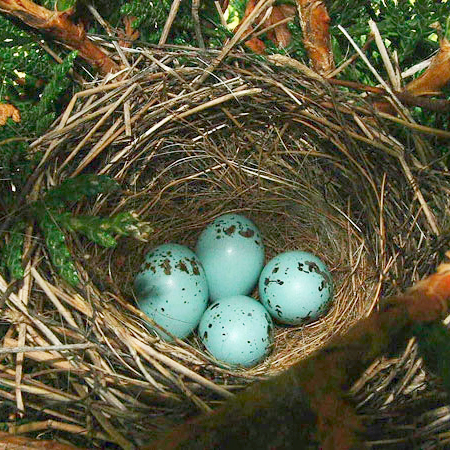
Chipping Sparrow
A loose cup of rootlets and dried grasses, very flimsy, often you can see through it; lined with animal hair and fine plant fibers. Finished nests measure about 4.5 inches across and 2.2 inches deep. 2–7 eggs. Pale blue to white, spotted or lightly streaked. Incubation 9-12 days, young ready to fledge within 9-12 days.
Where to look: Low tree branches, between 3 and 10 feet above ground. Sometimes will nest in shrubs.

Cactus Wren
Male and female build large football-shaped nests with tunnel-shaped entrances, about 7 inches in diameter and 12 inches long. Nest is made of coarse grass and plant fibers, about 7 inches in diameter and 12 inches long. The entrance is around 3.5 inches in diameter. Inside is lined with feathers. 2–7 salmon pink to buff colored eggs with reddish brown spots. Incubation: 16–17 days; young ready to fledge within 17–23 days.
Where to look: Cactus
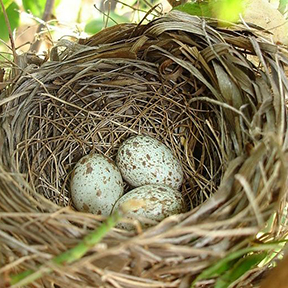
Northern Cardinal
Female crushes twigs with her beak until they’re pliable, then turns in the nest to bend the twigs around her body and push them into a cup shape with her feet. Nest is lined with grasses, stems, and fine roots and is 2-3 inches tall and 4 inches across. 2–5 grayish white, buffy white, or greenish white eggs speckled with pale gray to brown. Incubation: 11–13 days; young ready to fledge within 7–13 days.
Where to look: Fork of small branches in a sapling, shrub, or vines, 1-15 feet high and hidden in dense foliage.
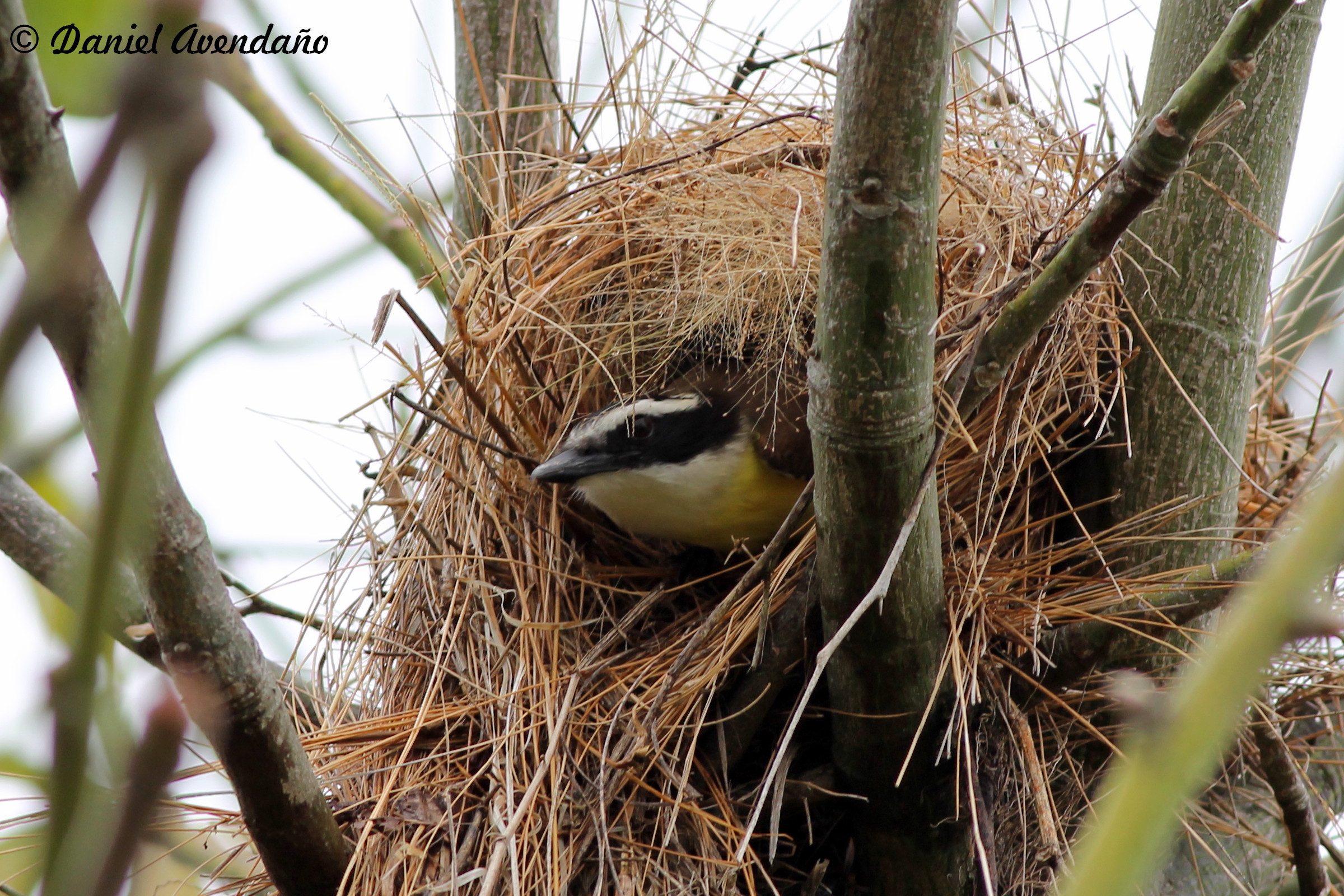
Great Kiskadee
Nest is made from grasses, thin twigs, moss, and paper or cotton, creating a tall, bulky, woven structure about 13–18 inches tall and 10 inches wide with a side entrance. The top of the nest hangs over the entrance hole like an awning. 2–5 creamy white eggs with dark brown and lavender spots. Incubation: 15–22 days; young ready to fledge within 10–12 days.
Where to look: Usually build their nests in the forks of trees, but sometimes in the upper crown.
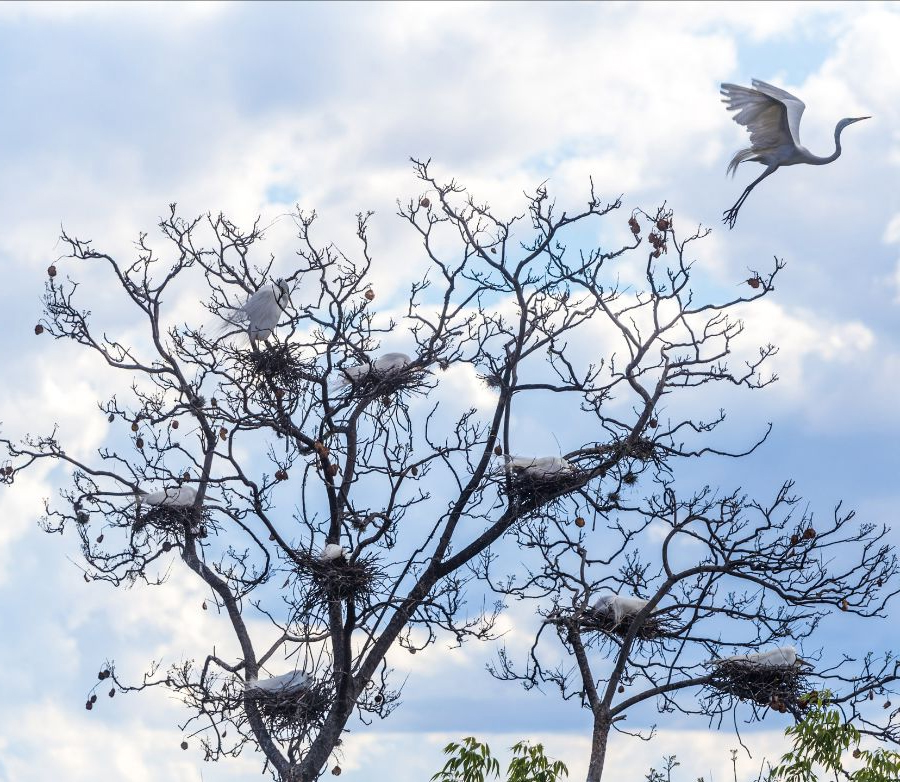
Great Egret
Males choose the nesting site, then builds a nest platform from long sticks and twigs before pairing up with a female. Both members of the pair may work together to complete the nest, though the male sometimes finishes it himself. The platform nest is up to 3 feet across and 1 foot deep. It is lined with pliable plant material that dries to form a cup structure. Nests in colonies. 4-5 smooth, pale greenish blue eggs. Incubation 23-27 days; young ready to fledge within 21-25 days, but stay near the nest for up to 40 days.
Where to look: Generally high up in a the top of a large tree, nest in colonies. View them in the trees at the Chorro (above Parque Juarez) beginning in late February or early March.
Sources: All About Birds and Nest Watch, Cornell Lab of Ornithology; National Audubon Society; Scientific American Magazine; US National Library of Medicine; University of Edinburgh; Utah Birds, CONABIO, Naturalista, Nest Watch.
Common Nest Design
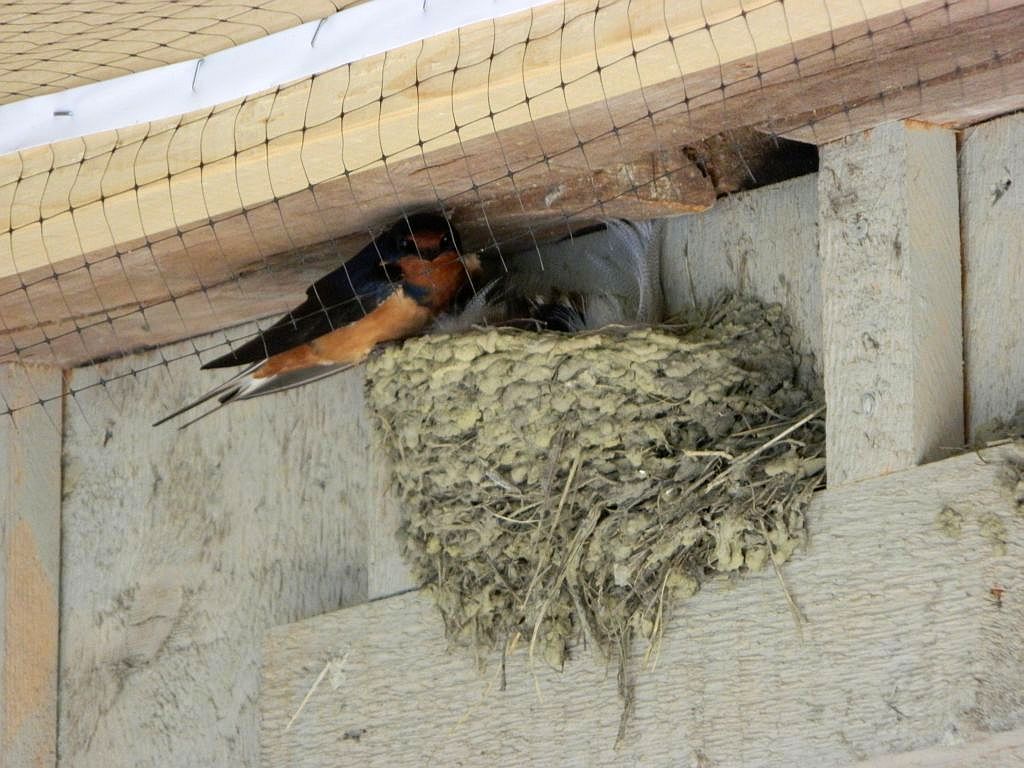
Barn Swallow – cup
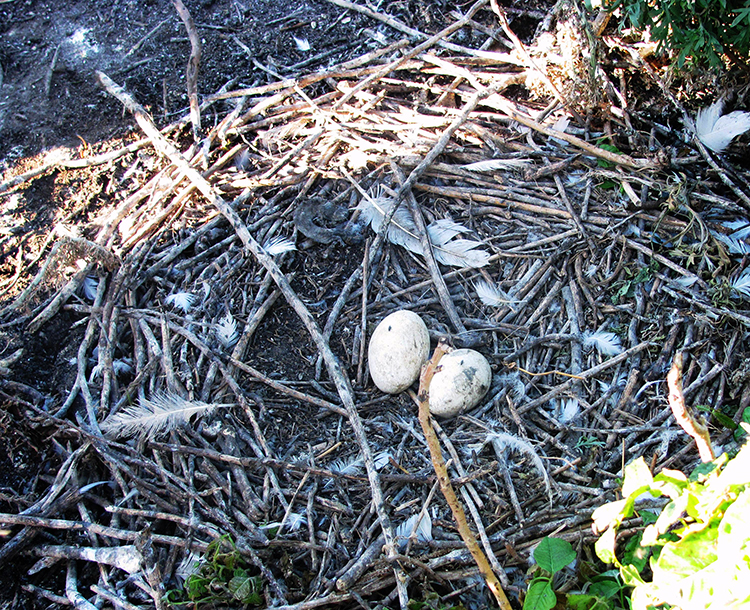
American White Pelican - Scrape

Bullock's Oriole - Pendant
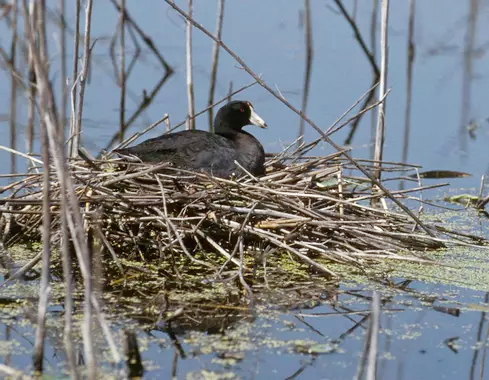
American Coot - Saucer
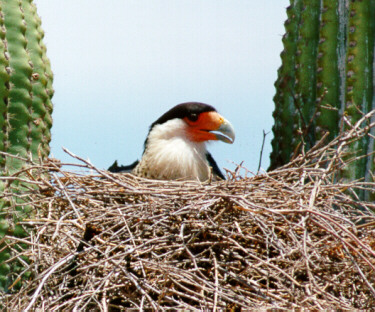
Crested Caracara – Platform
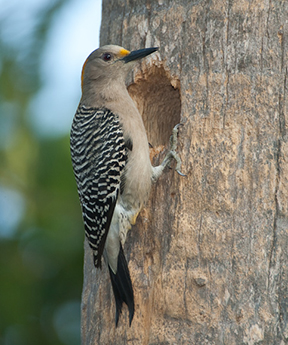
Golden-fronted Woodpecker - cavity
Subscribe to our newsletter
Our monthly newsletter will keep you up to date on our scheduled events, our work, and features monthly nature-related articles.
